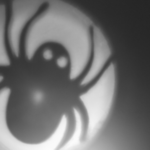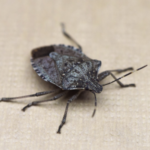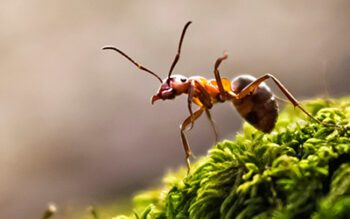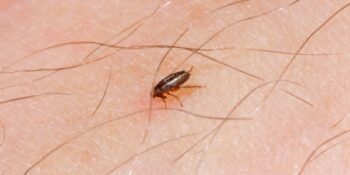
Every year when fall rolls around, a few things are certain: the colorful leaves on Long Island are going to be spectacular, the weather will be delightfully crisp, and crickets will invade Long Island homes in full force! Crickets can be particularly startling to come across in your home, due to their love of dark places and their jumping movements, which can be particularly startling! Luckily, we’re going to share how to spot two key species of Long Island crickets in your house, how to prevent future cricket invasions, and how to get rid of the existing cricket population in your home.
Types of Crickets on Long Island
On Long Island, we mainly deal with two primary cricket species: house crickets and cave, or camel crickets. While they each have their own distinct traits, which we’ll cover in detail, these crickets also have quite a few similarities. For starters, both species invade homes in long numbers during the fall when the weather cools down, where they’ll seek out moist, dark locations. They can also cause a great deal of damage to personal items stored in your home, by chewing large holes in fabrics, furniture, and clothing when they feed on them.
House Crickets 
House crickets are a yellowish-brown color with three distinct bands that go across their heads. They measure in around ¾ to ⅞ of an inch, and both the males and females have wings which cover their abdomens, and large hind legs, which allow them to jump so well!
House crickets are a noisy pest to have in your home. The males will actually make loud chirping sounds by rubbing their front wings together in order to attract females. While they’re not known to bite or carry diseases, house crickets can cause significant damage to personal items, as mentioned.
Cave Crickets/Camel Crickets
With a bent body shape that gives them a “humped” appearance, it’s easy to see why camel crickets are named the way they are. This type of cricket is also sometimes called a cave cricket due to the sheer fact that they’re often found living in caves and other dark damp locations…like your basement. Regardless of what you call them, cave or camel crickets are wingless, light brown to dark brown, and with dark banding on their body. They have very large hind legs, long antennae, and can grow to between ½ inch and 1 ½ inches in length. Unlike other crickets, cave or camel crickets don’t have the ability to chirp! 
Where Do Crickets in the House Come From?
House crickets most often enter homes while searching for a warm, humid environment to live in when the weather becomes cooler outside, which is why fall is the peak season when you’ll find them lurking in the shadows of your home. Once inside a home, house crickets are most often found in basements, closets, and crawl spaces.
How to Prevent Crickets in the House
There are a few key ways you can prevent cricket infestations by simply doing some minor home improvement projects.
Seal Windows and Doors
As with many insects, crickets will make themselves at home given the opportunity to come inside. If your windows and doors are firmly sealed, this will significantly reduce your chances of a cricket invasion. Check all of your windows and doors for vulnerabilities, and caulk them where necessary. Remember: crickets don’t need much space to enter your home, so be thorough!
Reduce Moisture
Because crickets love moisture, reducing moisture in your home will greatly help prevent crickets. Fix any leaky gutters or pipes to keep these pests at bay, and keep mulch and wood piles away from your home’s foundation.
Declutter Basements
Because crickets love dark hiding places, the fewer hiding places you give them, the better! Keep low levels in your home including your basement as clutter-free as possible to minimize crickets.
How to Get Rid of Crickets
Suburban Exterminating offers comprehensive home pest control services that target crickets. Benefits of our ongoing program include regularly scheduled visits, unlimited service calls, and peace of mind that our products are applied with the safety of you, your family and your pets in mind! To schedule an inspection for your cricket problem today, call or text our team at (631/516) 864-6900.





